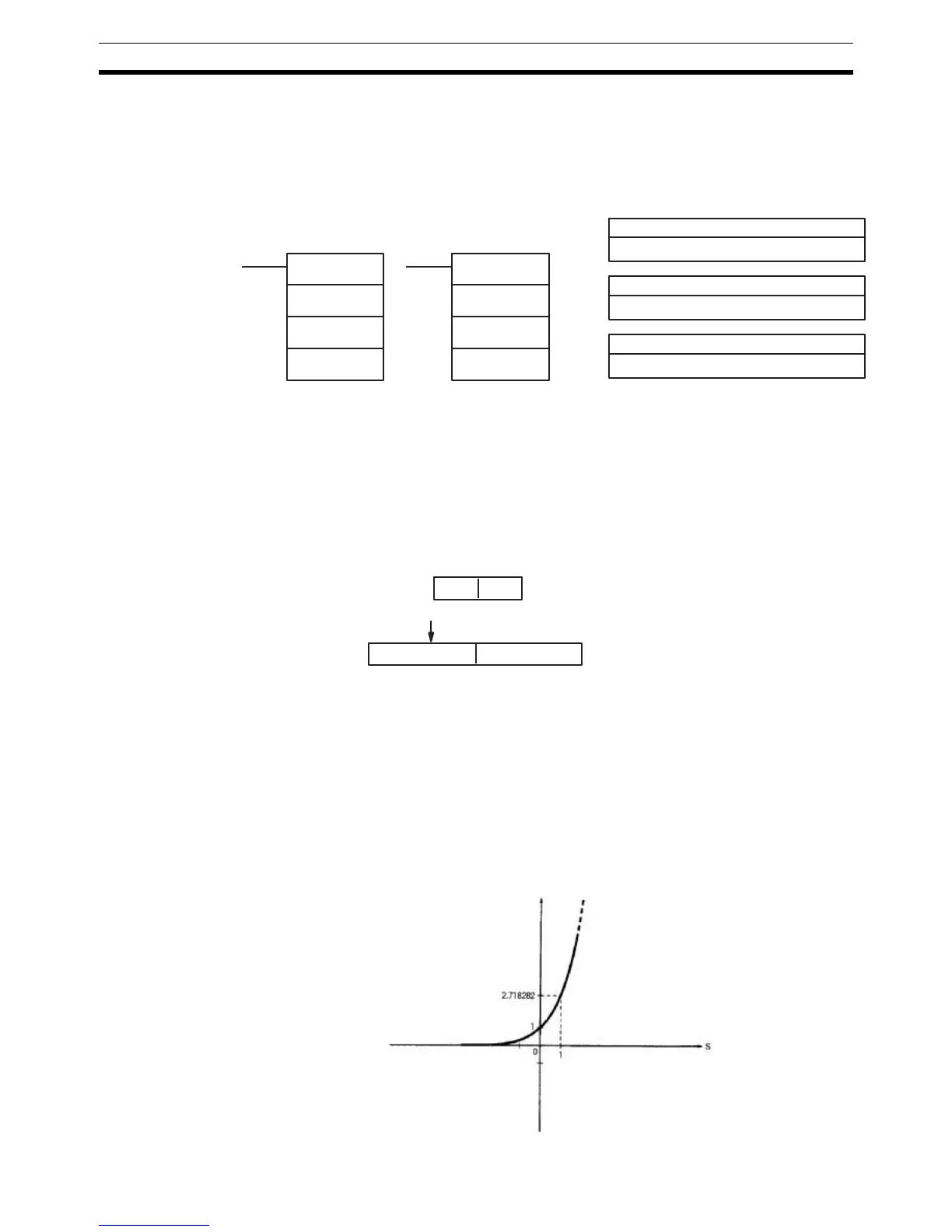370
Floating-point Math Instructions Section 5-24
OF: ON if the absolute value of the result is too large to be expressed as a
32-bit floating-point value. (The result will be output as +
∞.)
5-24-18 EXPONENT: EXP(––)
Limitations The source data in S+1 and S must be in IEEE754 floating-point data format.
DM 6143 to DM 6655 cannot be used for R.
Description When the execution condition is OFF, EXP(––) is not executed. When the exe-
cution condition is ON, EXP(––) calculates the natural (base e) exponential of
the 32-bit floating-point number in S+1 and S and places the result in R+1 and
R. In other words, EXP(––) calculates e
x
(x = source) and places the result in
R+1 and R.
If the absolute value of the result is greater than the maximum value that can
be expressed as floating-point data, the Overflow Flag (SR 25404) will turn
ON and the result will be output as +
∞.
If the absolute value of the result is less than the minimum value that can be
expressed as floating-point data, the Underflow Flag (SR 25405) will turn ON
and the result will be output as 0.
Note The constant e is 2.718282.
The following diagram shows the relationship between the input data and
result.
S: First source word
IR, SR, AR, DM, EM, HR, TIM/CNT, LR
R: First result word
IR, SR, AR, DM, EM, HR, LR
Ladder Symbols
Operand Data Areas
Third operand: Always 000
−−−
EXP(−− )
S
R
000
@EXP(−− )
S
R
000
R+1 R
S
Source (32-bit floating-point data)
S+1
Result (32-bit floating-point data)
e
R
S: Input data
R: Result

